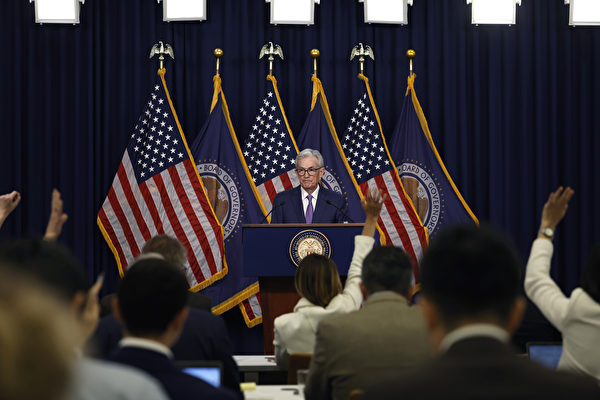Why does the Federal Reserve persist in keeping interest rates at their highest levels in 20 years? Nick Timiraos, a journalist from The Wall Street Journal known as the “mouthpiece of the Federal Reserve,” has answered this question.
In a column published on Thursday (June 13th), Timiraos stated that Federal Reserve Chair Jerome Powell insists on waiting for inflation to continue to decline before considering rate cuts, which is a prudent strategy.
Last week, the central banks of Canada and the European Union announced rate cuts. However, under pressure, Federal Reserve officials decided on Wednesday to maintain interest rates in a range of 5.25% to 5.5%, without signaling any readiness to cut rates soon.
The Federal Reserve officials are scheduled to hold four meetings this year in July, September, November, and December. The market predicts that the Fed will not begin cutting rates before September.
Following the interest rate meeting on Wednesday, Powell emphasized in a news conference that the Fed is looking for data or evidence that will “convince” them that inflation is indeed continuing to decline. He used the words “convince” or “confidence” 20 times during the news conference.
Timiraos suggested that this approach may be influenced by the different economic conditions in the U.S. compared to Canada and the EU. The U.S. economy is growing more robustly, and the impact of tightening monetary policy on the economy may also be slower to materialize, possibly requiring more time.
According to his observations, the Fed has started paying attention to monthly inflation data, possibly due to the difficulty in predicting economic trends over the past three years, especially in terms of inflation.
In 2021, despite rising prices, Federal Reserve officials kept interest rates near zero levels believing that inflation pressures would be temporary. Looking back, this perspective proved to be incorrect.
Timiraos jokingly suggested that past experiences might have caused officials to develop post-traumatic stress disorder.
Jan Hatzius, the Chief Economist at Goldman Sachs, also expressed that after such events, the Fed would be more concerned about its credibility and would not want to make the same mistakes twice.
Hatzius, renowned as the most accurate economist on Wall Street, is reported to have discussions with Powell on certain financial issues.
In an interview with CNN in March, Hatzius stated that despite inflation rates remaining higher than expected, the U.S. economy could still experience a soft landing in the next 12 months.
“More importantly, this decline is not accompanied by a significant weakening of economic activity. We haven’t seen a recession, nor have we seen anything close to a recession,” he said.
To combat inflation, the Fed raised the federal benchmark interest rates at an unprecedented pace from 2022 to 2023. Many worried that this move could lead to a surge in unemployment rates and stifle the post-COVID economic recovery. However, consumer spending and the job market showed stronger resilience than expected.
Hatzius’ assessment has proven to be correct. Since 2023, most economists believed that economic growth would weaken and inflation would slow down. However, inflation started to slow down gradually, while the economy remained robust.
Officials, including Fed Chair Powell, are looking for more compelling evidence before starting the rate cuts. However, they also fear that they might miss the optimal timing to act and be unable to prevent a substantial increase in the unemployment rate.
Powell acknowledged this during the press conference on Wednesday. “We fully understand that this risk exists, and waiting until things get worse to try to fix it is not our plan,” he stated.
The Wall Street Journal reported that Federal Reserve officials are facing two risks. One is that if they do not cut rates in the next few months as widely expected, banks and businesses that are most unprepared and susceptible to high interest rates will face severe challenges.
The other risk is that cutting rates could spark a market rebound and increased spending, thereby maintaining inflation above the Fed’s 2% target. The core CPI index rose by 2.8% in April.
The dot plot released after the Fed meeting on Wednesday showed that more officials predict four rate cuts in 2025, with rates slightly above 4%, which is higher than the previous dot plot.
Hatzius mentioned that the Fed’s strategy is similar to that of the European Central Bank. The ECB lowered rates after announcing lower-than-expected inflation data and higher-than-expected economic growth in the eurozone.
However, the ECB stated that future rate decisions would be based on subsequent economic data, and the rate-setting committee “did not pre-commit to a specific rate path.” This statement dampened expectations of the ECB entering a new round of rate cuts.
Hatzius stated, “The Fed may ultimately adopt this strategy.”
Powell emphasized on Wednesday that the rate cuts decision is crucial because it could trigger a significant market rally, thereby promoting consumption and investment.

